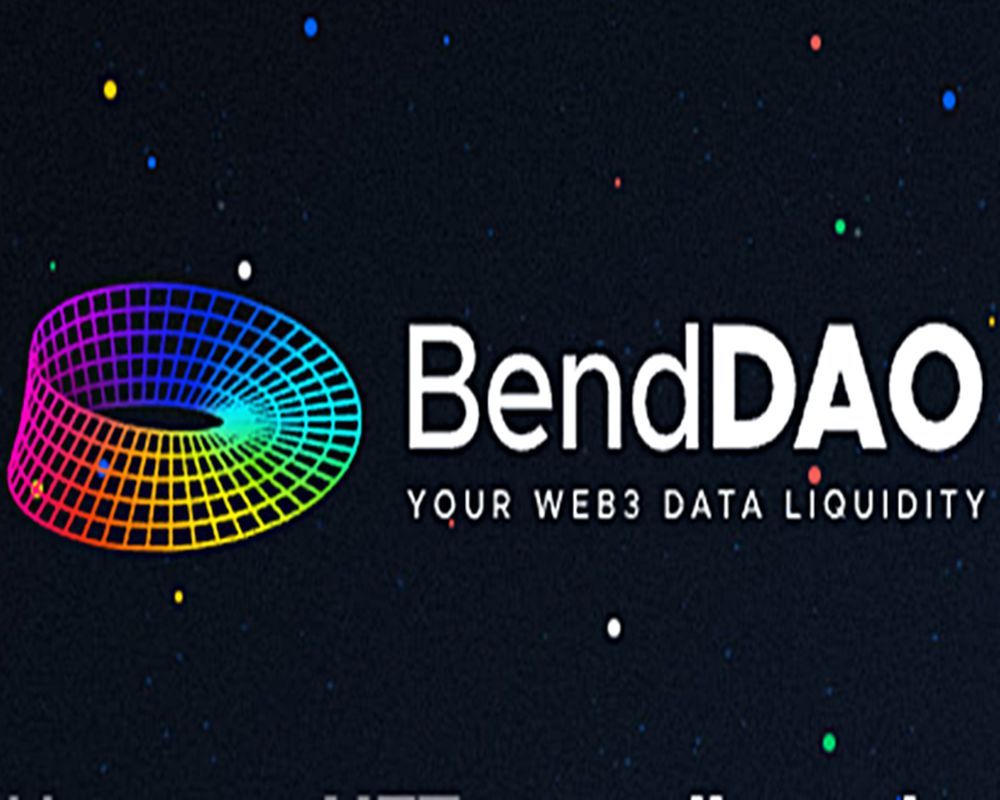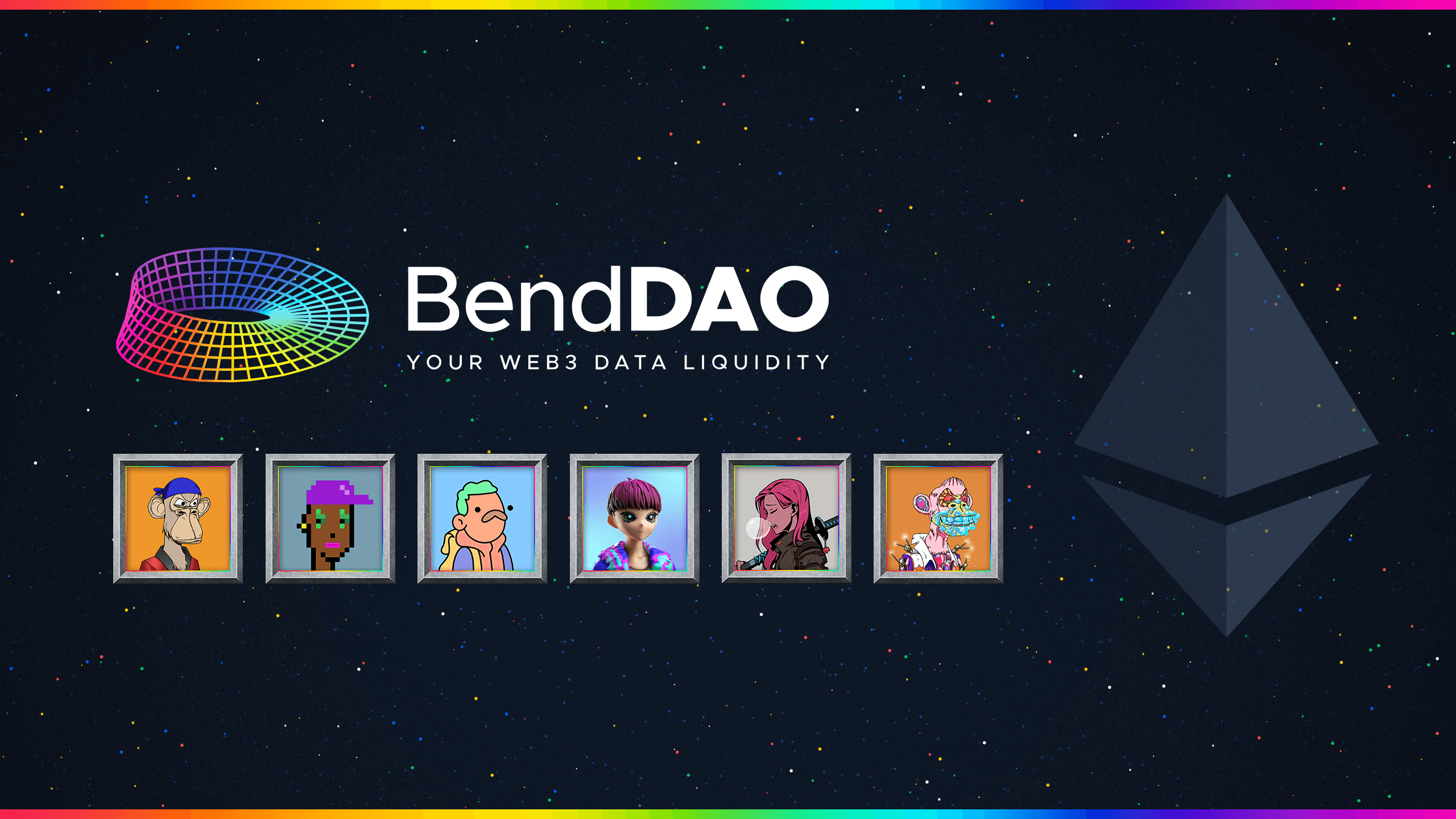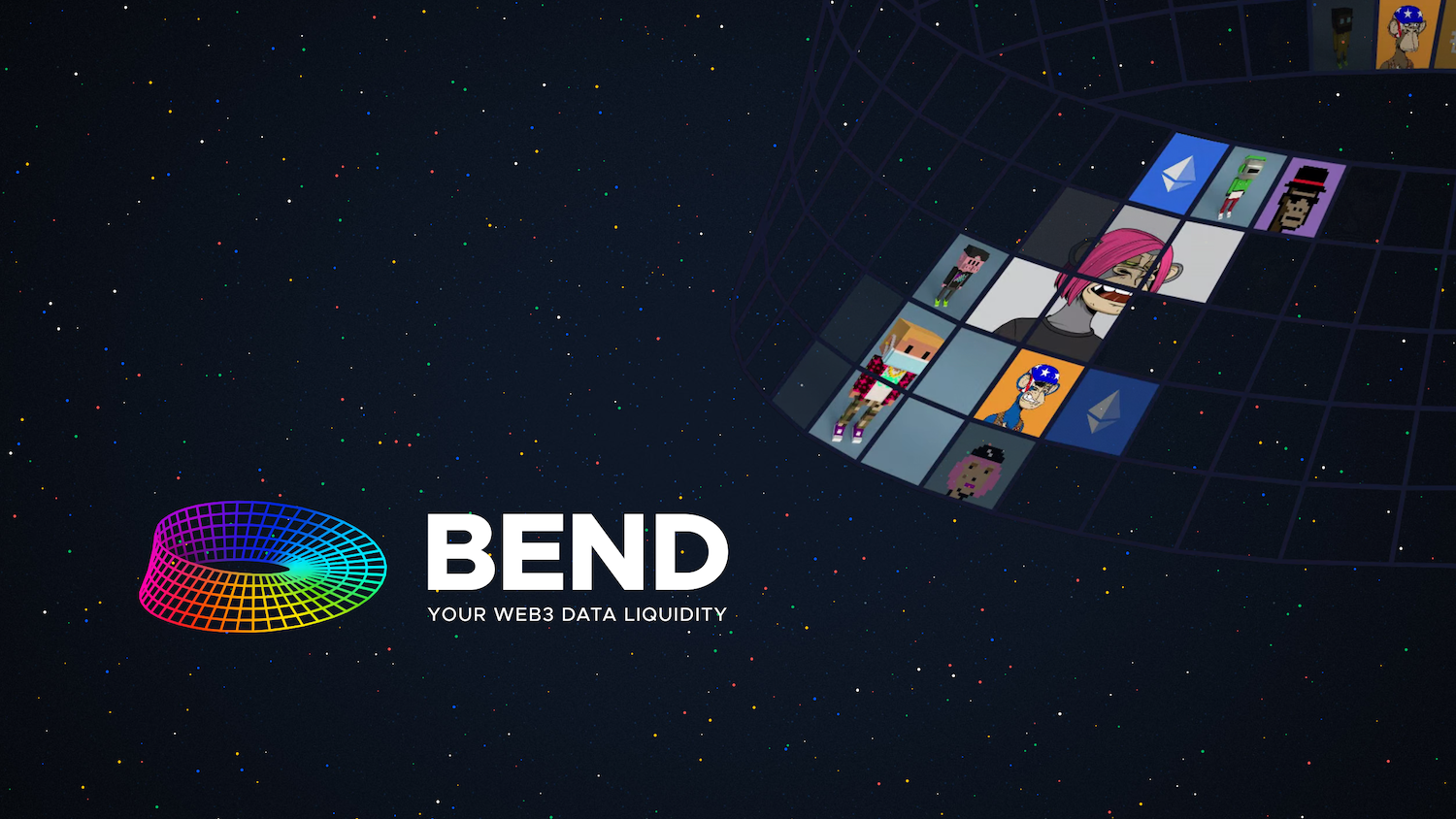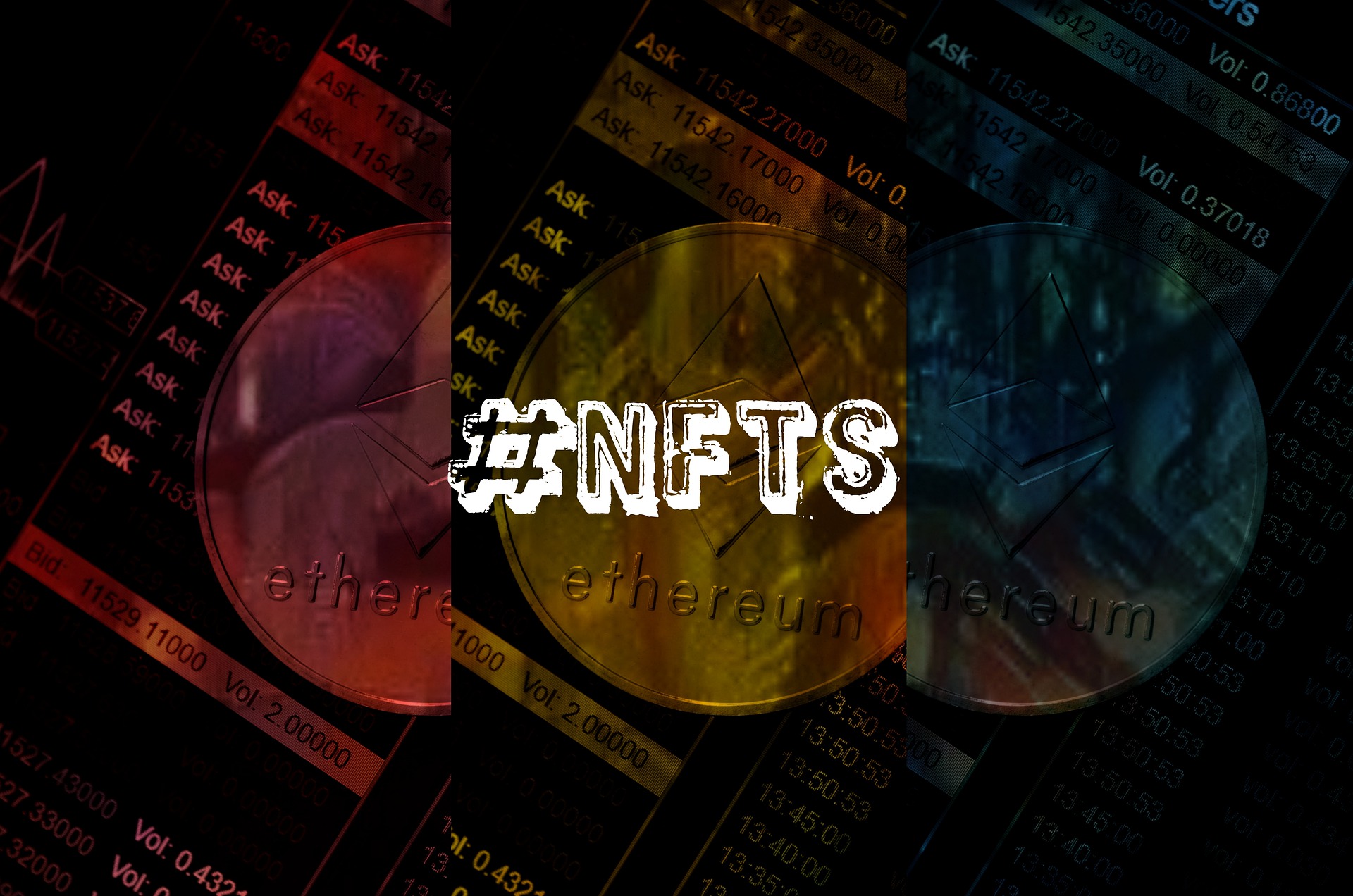The sector is bombarded by distinct projects that are looking to offer users top-notch liquidity services for nonfungible token (NFT) users, and BendDAO is one such project.
Liquidity is a crucial factor that cannot be ignored when analyzing and determining the value and worth of NFTs. Calls to resolve this issue have seen various startups venture into the sector with innovative liquidity products.
In that context, BendDAO (BEND) NFT liquidity algorithm is put in the category of a significant initiative that has entered the NFT industry aiming to address problems related to liquidity. BendDAO offers an NFT liquidity mechanism that looks to meet the requirements of NFT users and assist in resolving liquidity challenges.
BendDAO is the first decentralized peer-to-pool liquidity protocol for NFTs. This protocol enables NFT owners to deposit their assets as collateral on its platform. In return, they have the chance to take Ethereum (ETH) loans.
Related: What You Need to Know about Crypto Loans
Users and investors who have valuable nonfungible tokens in their wallets but are financially challenged can readily use the lending services offered by BEND while they deposit their NFTs as collateral. Fundamentally, the BendDAO cryptocurrency protocol is designed to support instant loans backed by nonfungible token collateral, collateral listing, and NFT down payments.
Hence, BendDAO is committed to providing a singular-step solution for NFT liquidity to users within a closed loop. That can be attributed to the flexibility for using the services of down payment, listing, and borrowing. The BendDAO crypto protocol is popular and massively adopted for supporting NFT down payments, NFT collateral-backed quick loans, and collateral listing.
BendDAO’s Origin
After massive support from famous investments and credible personalities and institutions, BendDAO (BEND) was unveiled in the third quarter of 2021. Some of the project’s notable supporters include Spartan Fund, Sushiswap, Peter Thiel, Founders Fund, Dragonfly Capital, Bybit, Pantera, Polygon, and many others.
After the launch of BendDAO on August 3, 2021, the DAO started to pursue the mission to build a whole economy of decentralized technologies, assets, and organizations. In an aim to achieve its desired goal, the DAO has been seen making some partnerships with specialized autonomous entities.
BendDAO incorporates current projects via token swaps and seems to avoid bottlenecking of decisions by limiting governance to mandate and funding approval.
BendDAO’s Key Features
BendDAO has already become a go-to platform for nonfungible token holders who seek effective means of addressing issues and problems of liquidity. Some of the integral features of BendDAO include:
- Collateral listing – nonfungible token (NFT) owners or sellers can decide to get up to 40% of the floor price upon listing for sale. Instant liquidity is supported by the Instant NFT-backed Loan feature. The buyer will then pay off the loan including interest after the deal.
- NFT-backed quick loans – NFT holders can use their NFT as collateral to borrow ETH via a lending pool, while the depositors offer ETH liquidity to earn interest. That is the main product of BendDAO that can enable users to trade NFTs with leverages.
Related: Is Aave Destined to Stay as the Top DeFi Lending Platform?
- Support for down payments on NFTs – buyers can acquire blue-chip NFTs from major NFT marketplaces with just a minimum down payment of 60% subject to the actual price while initiating a flash loan from AAVE to cover the remainder. The borrowed amount of the flash loan will get repaid via the instant NFT-backed loan on BendDAO. The buyer then automatically becomes the borrower.
BendDAO Products
The effectiveness of BendDAO services can also get attributed to some of the products that are featured on the DAO, which include BoundNFT, BendETH, and the interest rate model.
BendETH
BendDAO (BEND) protocol relies on a similar interest model to the aToken on AAVE. Interestingly, BendETH on Bend protocol works as the interest-bearing token that can be minted and burned on deposits and withdrawals. The value of the BendETH token corresponds majorly to the deposited asset in a 1:1 ratio while guaranteeing safe transfer, storage, and trading.
Related: The Top Blockchains for NFTs
BoundNFT
The next critical highlight in the functioning of BendDAO’s decentralized p2p or peer-to-pool lending application is BoundNFT. This is a debt-NFT minted on BendDAO when the borrowers deposit an NFT on the platform. The BendDAO protocol can utilize BoundNFT to access different vault functionalities together with comprehensive security without having to compromise the digital appearance of NFTs.
BoundNFTs comprise similar token ID and metadata as the original nonfungible token, thereby implying the ease of use as social media PFP. Since BoundNFTs are non-approvable and non-transferable, you are guaranteed safety from theft. The BoundNFT may serve some interesting utilities, including access to any airdrop and claimable or mintable assets for the concerned NFT.
Furthermore, the flash claim facility in BoundNFT enables owners to collect NFT rewards from various protocols. The interest rate model is also an integral highlight for understanding ‘what is BendDAO’ and its valuable benefits. It has been well-calibrated for managing liquidity risks together with optimizing utilization. Thus, BendDAO determines the borrow interest rates based on the availability of capital in the lending pool.
Interest Rate Model
The interest rate model is also an important highlight for understanding ‘what is BendDAO’ and its value benefits. It has been perfectly calibrated for the management of liquidity risks together with optimizing its use. BendDAO is designed to determine the borrow interest rates according to the availability of capital in the lending pool.
Notably, the interest Rate model serves some incredible results in managing liquidity risks by leveraging user incentives as sources of liquidity. Notably, the interest rate model of BendDAO provides lower interest rates for encouraging loans because of the availability of capital. In the scarcity of capital, the protocol is designed to impose higher interest rates which would encourage faster loan repayments together with interest deposits.
Benefits Of BendDAO
The description of how BendDAO works is known to NFT owners the benefits of nonfungible token liquidity with the BendDAO cryptosystem. It is also crucial to think about how it may help the NFT community in general. Here are a few advantages of BendDAO.
Rights To Equal Airdrop
With the BendDAO protocol, all airdrops for the NFT holders would be fair for the borrowers. BendDAO ensures that all airdrops are collected and then distributes them out to people who have BoundNFTs and have already put their NFTs up as Security.
By using the decentralized P2P liquidity protocol for NFTs, the borrowers can now make defined claims on NFT payouts on other protocols. Although the NFTs are still in the BendDAO collateral pool, the borrowers can still get their incentives via the Flashloan feature.
Unafraid Of Theft
With BendDAO’s instant loan offerings, collateral nonfungible tokens are turned into representations of BoundNFTs. This is achieved by following the ERC-721 standard. The prohibition on transferring BoundNFTs now offers a reassuring guarantee of safety from theft.
The digital look of the boundNFT is the same as that of the NFT avatar, and it can be utilized on Web2-based social media networks that support the NFT avatar. For example, even in the form of BoundNFT, a BAYC nonfungible token would still resemble the digital ape.
Protections For Liquidity
A crucial value of the BendDAO NFT protocol for NFT communities is that it protects against liquidation for 24 hours. Borrowers may also consider the advantages that come with using BendDAO to prevent any forms of losses brought on by market swings.
The NFT token liquidity protocol provides you with 24 hours to pay back the loan and avoid losing money since the price of nonfungible tokens goes up and down. Many NFT owners are reluctant to part with their nonfungible tokens. With the liquidation protection period, they can get cash from their NFTs without having to sell them or lose money due to price changes.
Related: How Do Crypto Liquidity Pools Work?
BendDAO guarantees equal airdrop rights for the borrowers. Holders of the BEND token have the right to vote and determine which NFT can act as collateral. The token holders are also entitled to share all of the income generated in the protocol.
Shortcomings Of BendDAO
BendDAO in its effort to offer optimal liquidity services for users encounters various challenges that seem to impact its efficiency. One notable challenge with the DAO’s ecosystem operation is that it comes across situations where borrowers refuse to pay back their loans.
In the meantime, the nonfungible tokens auctioned off as collateral are not bought because of the high prices that have been set. In case they are sold for lesser amounts, the value might not adequately cover the outstanding loan.
Furthermore, there are five key factors for the availability of NFT on the BendDAO network. They include:
- Asset value is also referred to as the asset’s mean sales value.
- Customer retention, or the number of days within the specific time of active status.
- Many nonfungible token revenue or trading volumes.
- Many unique wallets are engaging with NFT in dApps from the NFT platform.
- NFT-related interactions including counting dApp activities with bidding and other NFT-related uses.
BEND Token
BEND is the governance token of the BendDAO protocol. Notably, it has a circulating supply of 382,458,902 BEND coins with a maximum supply of 10,000,000,000 BEND coins. The distribution of the BEND tokens is allocated this way:
- Treasury Reserve – 21%
- Developer team – 21%
- An incentive for lending and borrowing – 40%
- Airdrops – 5%
- Initial fair-launch offering – 10%
- Uniswap LP incentives via governance – 3%
The Takeaway
Possibly, the BendDAO NFT liquidity solution protocol has played an integral role in the NFT industry as it has efficiently addressed the issue of nonfungible token liquidity without causing NFTs to collapse. Notably, the BendDAO (BEND) has achieved all that despite still being in the early stages of development.
It has now become a preferred option for the holders of NFTs since they do not have to fractionalize their holdings to benefit from the intended liquidity. Thus, it is thought that the BendDAO protocol can produce positive results for the evolution of NFT liquidity. That is accompanied by the certainty of a massive governance structure and a threat assessment strategy.











